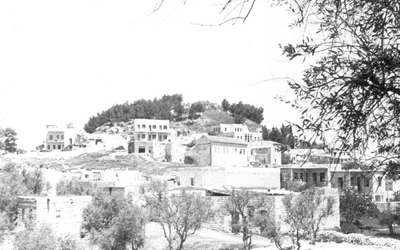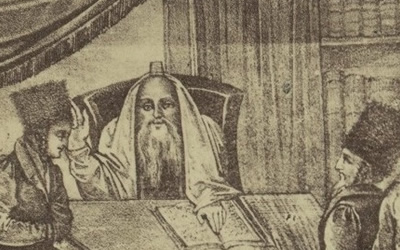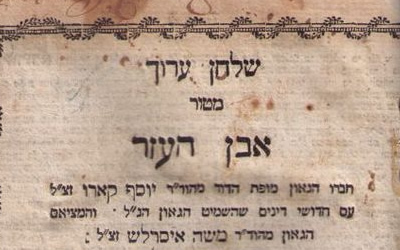Historical Overview
By the early 1800's the Jewish population of Tzfat had begun to grow, due to the immigration of Eastern European Ashkanazi Jews. Although the population suffered from rampant disease and poverty, new immigrants continued to chose Tzfat as their home when they came to live in the Holy Land. By 1834 the Jewish population of Tzfat numbered approximately three thousand people.
Revolt
In 1834 the local Arabs rebelled against the new Egyptian governor who ruled Ottoman Palestine between 1831 to 1841. The rebellion against this governor, Muhammad Ali, expanded to include attacks against the Jews of Palestine. While the Jews of certain cities like Jerusalem were spared, Tzfat was not. A Safed Islamic clergyman named Muhamad Damoor incited the Moslems to attack the Jews of Tzfat. On June 15, 1834, local Arabs and Bedouins, including the Arabs who lived in the Arab Quarter of Tzfat itself, invaded Tzfat’s Jewish Quarter.
Destruction
The Arabs destroyed homes, plundered synagogues and businesses and burned much of the city. Eyewitnesses described scenes of torture, and murder over the course of 33 days. Historians estimated that over 500 people were killed and many others were blinded and maimed.
Shelter
The majority of the Jews living in Tzfat escaped, taking refuge in nearby villages, including Arab villages. A large number of residents fled to Meron, Ein Zeytim and Biriya. Some hid in caves and vineyards. One rabbi paid the local qadi of Safed (religious judge) to allow approximately one thousand Jews to stay in the qadi’s courtyard but after a few days the qadi expelled them and they were forced to find refuge in the mountains. The people had no clothing, food or shelter. Many had run from their homes blindly and were unaware if and where their families had survived.
Within the Old City
Several leaders of the Jewish community remained in the city to assist the wounded, elderly and children who had become separated from their parents. These rabbis continued to walk the streets each day, putting their own lives in danger as they assisted the people who needed their help.
Thirty-Three Days
The Arab rioters lured the Jews back to the city and then attacked them again. They took their clothes, the only belongs that the Jews still had, and sent them running back to their hiding places. Within the city the Arabs destroyed hundreds of sacred books including Torah scrolls and the ancient books of Rabbi Isaac Abuhav. They also reached the synagogue at Mt. Meron and destroyed the Torah scroll in the Meron synagogue. The Arab rioters destroyed many of the Jews’ homes in their search for gold and silver and burned much of the Jewish Quarter.
Revolt’s End
The Jews who were hiding in the surrounding mountains were finally able to make contact with outsiders who related the events to Ibrahim Pasha, the Egyptian ruler who had been occupied in Jerusalem and not been aware of the situation in Safed. Pasha sent a contingent of Lebanese Druze to put down the revolt. Ibrahim Pasha made an attempt to collect money from the Arab rioters but the Jews received very little compensation for their losses. Several of the Arab leaders of the pogrom were hung by Ibrahim Pasha.















No Comments found